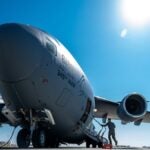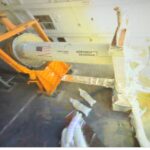
The Boeing [BA] T-7A Red Hawk had its first engineering and manufacturing development (EMD) flight test on June 28 from St. Louis Lambert International Airport. The flight, which lasted about an hour, was the first U.S. Air Force acceptance flight of the T-7A. Air Force Maj. Bryce “Triple” Turner of the 416th Flight Test Squadron at Edwards AFB, Calif., helmed the T-7A on June 28, while Steve "Bull" Schmidt, a former U.S. Navy aviator and Boeing's chief T-7A test pilot,…














